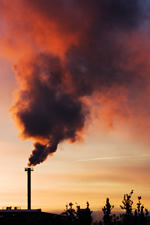ENVIRONMENT PANEL Chairman CHAN HAK KAN
2012 – reasons for Panel EA rejection of ENB landfill / incinerator package
www.legco.gov.hk/yr12-13/english/panels/ea/papers/ea0527cb1-1079-2-e.pdf
“13. Details of the funding proposals for the three landfill extension projects are set out in LC Paper No. CB(1)1369/11-12(01) which is hyperlinked in the Appendix. According to the Government, IWMF would require some seven years for reclamation, construction and commission, while landfill extension would need a few years for site preparation works
15. The Panel held another special meeting on 20 April 2012 to continue discussion on the funding proposals. Noting that many measures pertaining to the Policy Framework had yet to be implemented , members were opposed to the reliance on landfills for waste disposal in view of the associated environmental nuisances, as well as the long lead time and cost incurred from restoration of landfills. They stressed the need for an holistic package of waste management measures (including waste reduction, separation and recycling) with waste incineration as a last resort and better communication between the two terms of Government on environmental policies, in particular on the need for incineration. They also urged the Administration to identify other suitable outlying islands for IWMF and promote the local recycling industry. In view of the foregoing, members did not support the submission of the funding proposals to the Public Works Subcommittee for consideration.”
Q: WHAT POLICY AND DIRECTION HAS CHANGED AT ENB SINCE THE LAST LEGCO PANEL ENV AFFAIRS REJECTION ? A: NOTHING !
actually gone backwards as the ‘new’ figures show– the China ‘Operation Green Fence’ blocking of transhipped dirty plastic from overseas to China via HKG exposed this sham of using the plastic trash transhipment figures as ‘local recycling’. ENB/EPD were caught out cheating by ‘Operation Green Fence’. The ENB denied the container loads of blocked plastics were locally landfilled – so what happened to it ?
http://www.theguardian.com/sustainable-business/china-green-fence-global-recycling-innovation
SCMP Recycling figures: plain rubbish
CTA says: this only came to light due to China’s ‘Operation Green Fence’
ENB has been using data of containers of trash transhipped through here to China in their local recycling figures
When China blocked the transhipment of unwashed plastic imports the shxt hit the fan + the divisive ‘local recycling’ practice came to light
Still waiting to find out which local landfill they buried the dirty plastic waste in
Recycling figures: plain rubbish?
Wednesday, 29 January, 2014
Cheung Chi-fai
Overhaul of system is promised as officials admit estimates of the amount of waste the city recycles have been drastically overstated
Officials have admitted that estimates of the amount of Hong Kong waste being recycled – once put at over 50 per cent – have been drastically overstated. They said yesterday that the figures were distorted by “external factors” beyond their control and the system for calculating them would be overhauled. The admission came as the Environmental Protection Department reported a slashed recycling rate of 39 per cent in 2012, down from 48 the previous year and a peak of 52 in 2010.
The department blamed fluctuations in the waste trade and irregularities in export declarations for the distortions. In an effort to improve its data collection, it will introduce extra measures, as recommended by a consultant commissioned to look into the problem. But the officials said they did not believe the distortion would affect policy-making or the achievement of targets set out in the waste-management blueprint released last year.
World Green Organisation chief executive William Yu Yuen-ping said he was concerned about the “inflation of the recycling rate” and urged the department to set up an expert group to review the system. Friends of the Earth said the public would be confused by the figures. According to the 2012 solid waste monitoring report released by the department yesterday, Hong Kong recycled just 2.16 million tonnes of waste, 860,000 tonnes less than 2011. About 60 per cent of the shortfall was due to a sharp drop in the trade in plastic waste. Last year, a reported 320,000 tonnes of plastic waste was recycled, down from 840,000 tonnes in 2011 and 1.58 million tonnes in 2010. But the amount dumped in landfills largely remained steady at 600,000 to 700,000 tonnes during the same period. Since then, officials have used the disposal rate per person, rather than the recycling rate, as the key indicator to measure policy effectiveness.
In 2012, the former rate rose 3 per cent to 1.27kg. The department said the recycling rate had been calculated from waste export figures compiled by census and customs officers, and the booming trade in recent years might have inflated the figure. It also admitted that the formula could not accurately reflect local recycling efforts since it also included waste imported and then exported after processing. “We believe the 2012 figure is closer to the reality of how the city fared in recycling after a slump in the trade,” said an official, speaking anonymously.
Officials refused to be drawn on whether the admission showed that the recycling rate, used by former environment chiefs to highlight the city’s progress in dealing with its waste problem, had little value. “The public still have expectations for this figure and we will try to give the best estimate,” said an official, adding that the formula was widely adopted elsewhere in the world. Greeners’ Action executive director Angus Ho Hon-wai said the government should set up a registration system for recyclers in order to get first-hand recycling data. Lau Yiu-shing, a local waste recycler, admitted some operators might have wrongly reported export figures to suit their needs. But the scope of doing so had shrunk as mainland customs stepped up checks in recent years.
http://www.scmp.com/news/hong-kong/article/1415979/recycling-figures-plain-rubbish

